

Rolex Daytona Movements By Pucci Papaleo
From the book “Ultimate Rolex Daytona”, Pucci Papaleo Editore.
Texts by Dody Giussani - Photos by Pino Abbrescia and Fabio Santinelli.
Since their release, the Rolex Cosmograph Daytona models were powered by three different mechanisms: the Valjoux 72 calibre (which developed in the following versions: 72B or 722, 722-1 and 727), the Rolex 4030 movement (based on the Zenith El Primero) and the current in-house Rolex 4130. These three mechanisms can be taken as an example of the mechanical chronograph’s development from the ‘60s up to the present days.
Let us begin with the reliable Valjoux manual winding chronograph, which was equipped with a column wheel and an horizontal clutch (the coupling yoke): the most logical choice for a watch producer in the early ‘60s. In 1969, the Swiss watch industry launched itself into the creation of an automatic chronograph. The match was won by Zenith, which released the first integrated automatic chronograph running at a high frequency of 36.000 oscillations per hour: the El Primero timepiece.
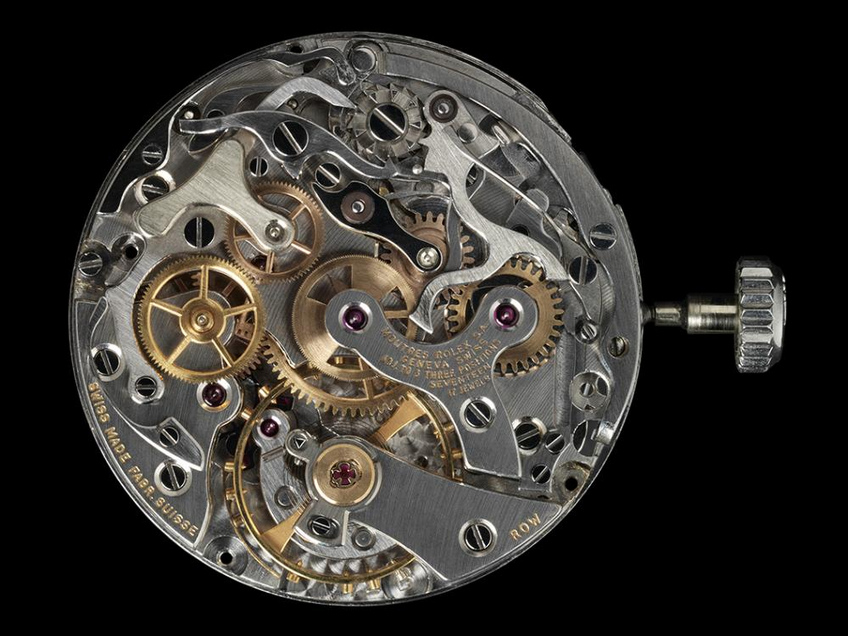
The calibre Valjoux 72B replaces the 72A
Since 1966, the Valjoux 72B mechanism completely replaced the ‘based’ Valjoux 72A movement. This movement differs from the previous version by introducing the Rolex Microstella adjustable-inertia balance wheel: a pair of screws located on the rim of the balance wheel enables the inertia adjustment by working on the frequency without the need of a regulator, which featured in the former 72A calibre movement. The flat hairspring was replaced by a better performing Breguet overcoil hairspring, which keeps its concentric poise during its expansion and contraction (the so-called ‘breath’ of the coiled spring). The two screws displayed in the picture are part of the adjustable-inertia system: notice one of the Microstella screws on the left (each pair is placed at the far ends of the balance wheel), and a thicker regulating screw on the right; contrarily, the other ones are fixed.
The 72b calibre is also termed the 722. A 13 ligne design (30 millimetres diameter) running a frequency of 18.000 oscillations per hour. The chronograph system relies upon a column wheel equipped with a yoke coupling system. The axis of the Rolex Microstella regulating screw balance wheel is protected from eventual shocks by a Kif shock absorber unit, which often displays the clover-shaped Flector version (as shown in the inset). The movements show different kinds of decorations: the calibre illustrated here sports mirror-shine screws and perlage finished bridges. Another distinguishing feature of this typology of movements is the screwed setting lever: in order to disengage the winding crown, a screw placed close to it must be loosened. This component will later be replaced by a pusher setting lever.
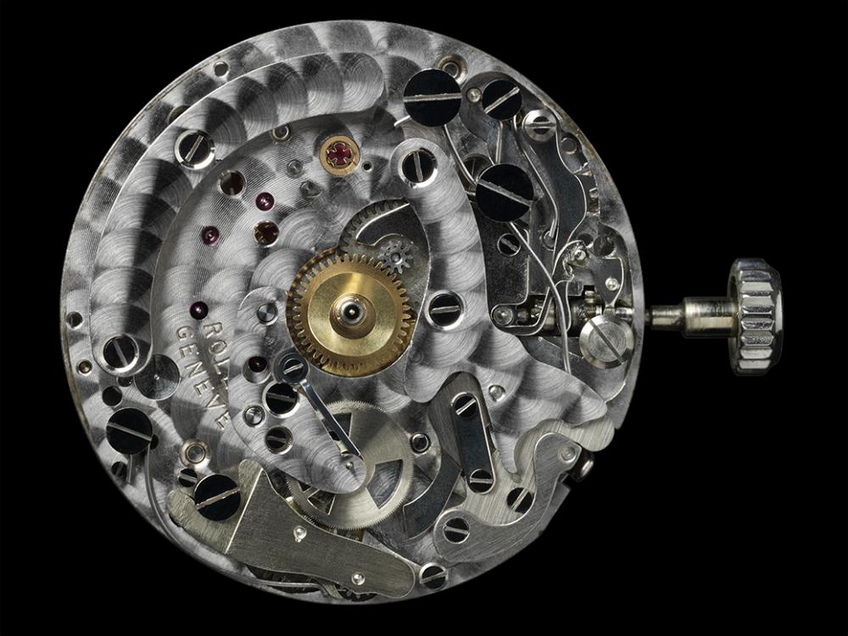
The calibre Valjoux 722
There are no substantial differences between the 72B and the 722 Valjoux caliber movements. However, today small variations between the mechanisms may consequently be noticed during the servicing operations undergone by the movements throughout the years. With regards to the chronograph part, the traditional mechanism is equipped with a coupling system sporting a driving wheel (as shown on the left) and a setting wheel (at the centre).
The driving wheel, being integral with the second hand, is always in motion and constantly engaged with the setting wheel, pivoted on the coupling yoke. By activating the chronograph start button, the yoke drives the setting wheel (as shown in the inset) which engages the chronograph centre wheel (on the right), conveying power from the driving wheel (on the left) to the centre wheel: the chronograph hand then starts to move around the dial. The sudden engagement between the setting wheel and the chronograph centre wheel can cause the second hand to jump slightly forwards or backwards when activated. Notice the ‘Swiss Made Fabr. Suisse’ inscription.
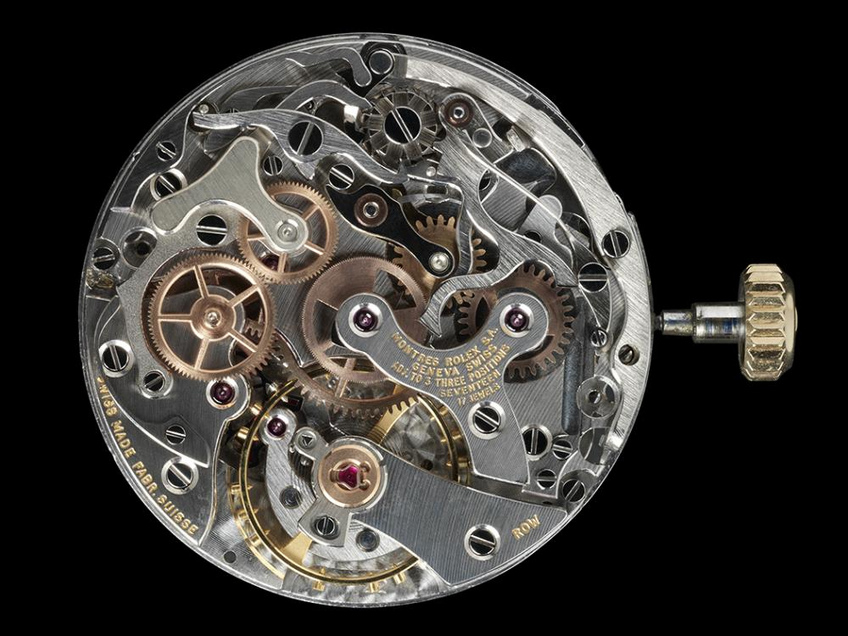
One of the elements we would define as ‘stylistic’, and which distinguishes the 722 mechanism from its 722-1 successor, is the placement of the ‘Rolex Genève’ inscription on the plate viewed from the dial side: a detail which can be better appreciated by comparing the enlarged photographs we will meet in the following pages. As mentioned above, there are no differences between the 722 and the 72B movements. Rolex itself used the two denominations indifferently, even on the technical documentations of the calibres. Small improvements were constantly introduced by the Swiss watch manufacturer, even though today there are no referred documentations. For example, the replacement of the anti-shock spring which protected the balance, with another of identical size, same functions but more modern. Sometimes, these technical decisions might have been made following the new releases introduced by Rolex’s suppliers.
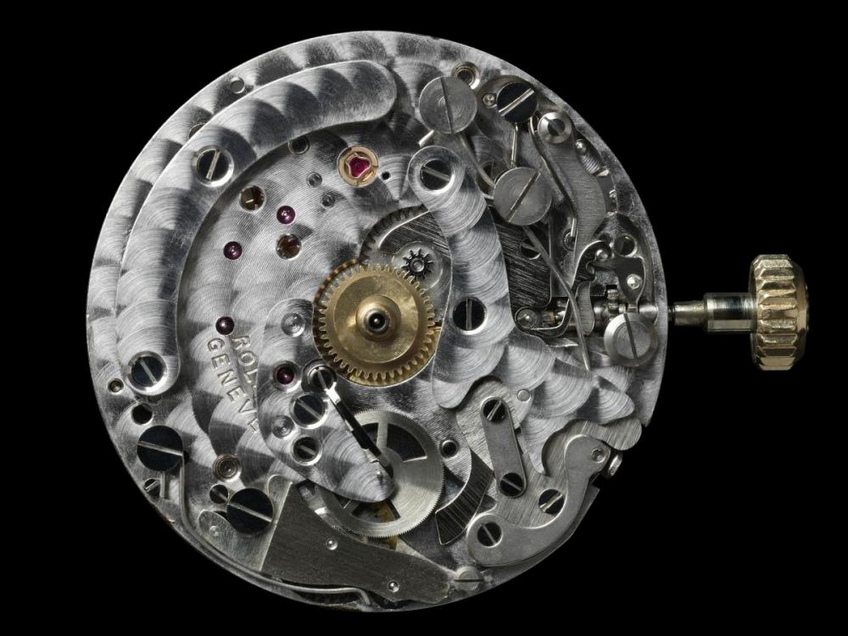
The calibre Valjoux 722-1
In 1967, the Daytona timepiece was powered by the Valjoux-based 722-1 mechanism. Many movements of this generation featured a guard spring which protected the balance hairspring. This spring consists of a metal sheet (as shown in the picture) which prevents the hairspring from sliding over the stud supporter during an eventual shock. The modification had already been introduced in the 722, but it was not always applied. Therefore, today, many movements are not equipped with this protecting spring, because despite its advantages this element also caused functional problems. The 722-1 caliber is indicated by Rolex as being a Valjoux 72A-based mechanism: both the dimensions (30 millimetre diameter and 6,95 thickness) as well as the frequency (18.000 beats per hour) are the same.
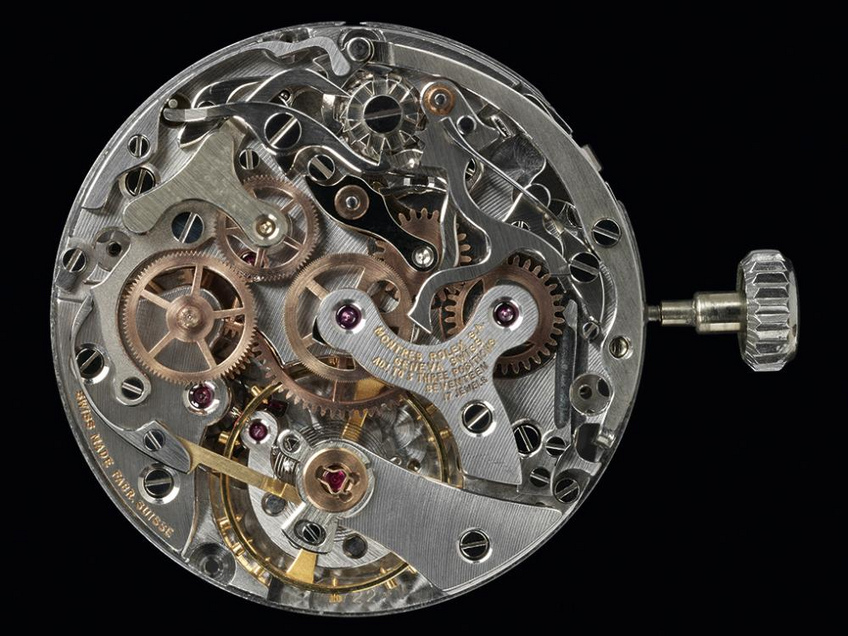
Another modification introduced by the 722-1 calibre is the hour recorder conveyor. This element (in the picture above) connects the chronograph hour recorder wheel (which is located on the dial at the 6 o’clock position) to the barrel, from which it is directly activated at the start of the chronograph. The new conveyor pivots on a flat eccentric screw and is pushed towards the chronograph hour wheel by means of a wing-shaped spring (on the left), which replaces the more simply-shaped one featured by the 722 calibre. The eccentric screw on which the conveyor rotates (as shown in the picture in the right corner below) provides a perfect regulation of its position and a better engagement of the hour wheel. Notice the different position of the ‘Rolex Genève’ inscription engraved on the plate.



